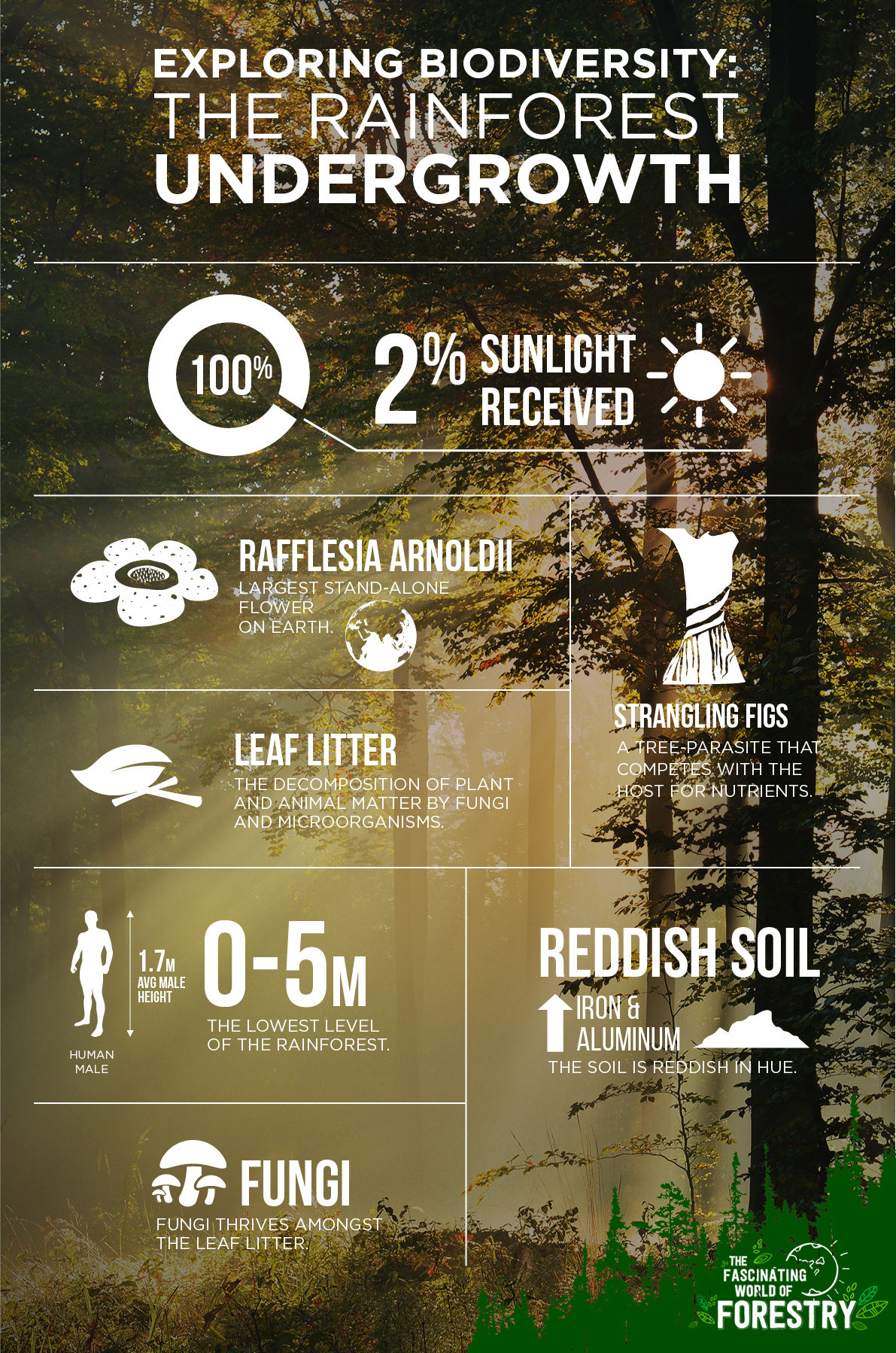
Do you know that the trees of the Sumatran rainforest are evergreen? The tropical rain forest of Sumatra is a large-scale ecosystem (biome) that thrives in the equatorial climate, and remains relatively the same all year round! High in not just rainfall but also humidity levels, the undergrowth of the Sumatran is extremely dense and fertile compared to woodlands of temperate climates.

Spanning a vertical height of up to 5 meters, the undergrowth makes up the lowest level of the forest system and receives only 2% of the sunlight that is filtered down from the canopy above. Here, plants well-adapted to low-light conditions thrive and compete for sunlight while others such as the Strangling Fig are parasites that depend on host trees for nutrients. Begonias, bird’s-nest ferns and orchids are also some common plants that can be found in the humid environment.
If you had ever come across a large red flower with a pungent smell and white spots sprinkled all over its petals, you might have met the Rafflesia arnoldii!
Rafflesia arnoldii is one of the three national flowers of Indonesia, well known for producing the largest flower in the world. A native Sumatran plant, the lone-standing flower is distinctively red with a foul decaying smell to attract flies. Flies play a vital role (like butterflies and bees) in the process of pollination at this level of the forest system because air below the canopy is simply too still for other means of pollination.
The forest floor of the Sumatran is carpeted by leaf litters, which are vital to the forest ecosystem. High rainfall, humidity and temperature encourage the rapid decomposition of organic plant and animal matter by the fungi and microbial community (e.g. bacteria). This helps to drive the efficient replenishment of soil nutrients which let the trees grow tall and strong.
If you were to grab a handful of soil, you might discover that apart from the characteristic dampness, the rainforest soil is reddish in hue due to the high levels of iron and aluminum.
Apart from the color of the soil, what lurks in the leaf litter might not be noticeable at first glance to untrained eyes! This is because the creatures that inhabit the leaf litter are mainly invertebrates that contribute to the breaking up of leaf litter into smaller fragments.
What do you love about the rainforest? Comment below and let us hear your thoughts!
Resources:
http://www.scientificamerican.com/article/bring-science-home-leaf-litter-biodiversity/
http://www.functionalecology.org/view/0/virtualIssues/lifeafterdeathvirtualissueintro.html
http://wildsumatra.com/kerinci/wildlife
